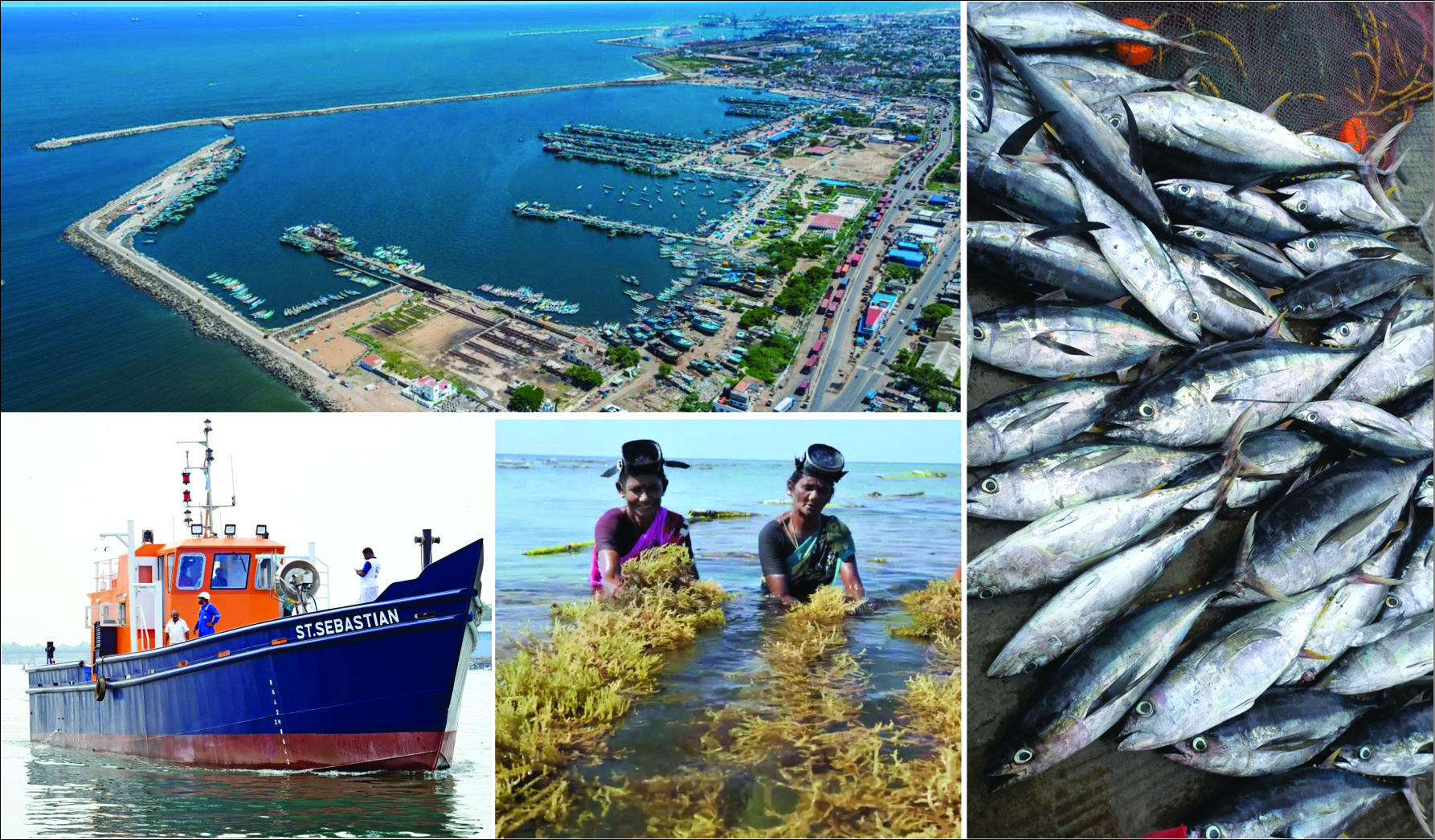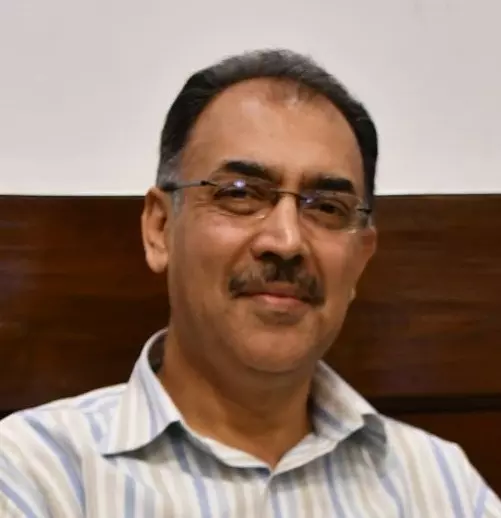Tides of Transformation
In its course of reviving coastal livelihoods and combating climate change, India’s blue economy is sculpting a sustainable marine future through smart harbours and deep-sea governance, among other things

A blue economy encompasses a framework for the sustainable, inclusive, and resilient management of our marine resources. Such an approach is closely aligned with Sustainable Development Goal (SDG) 14 of the United Nations, which emphasises the need to conserve and sustainably use the oceans and seas. During India’s 2023 G-20 Presidency too, world leaders committed themselves to mainstreaming the need to build a resilient blue economy. In fact, a key pillar of India’s “Viksit Bharat” vision for 2047 is the focus on a robust blue economy with an investment of Rs 8.60 lakh crore.
In this context, fisheries and aquaculture have a major role in leveraging economic development through the nation’s extensive 11,098 km coastline and a vast 2.4 million square kilometre Exclusive Economic Zone (EEZ). India is the second-largest fish-producing country in the world. In addition, it is now also the second-largest nation globally in aquaculture production. The country has witnessed a 103 per cent increase in national fish production since 2013–14, which now stands at a record 195 lakh tons in 2024–25. Our seafood exports have doubled to Rs 60,523 crore.
This has been made possible through cumulative investments—during the last ten years—of Rs 38,572 crore for infrastructure development, technology infusion, and the promotion of sustainable practices across the country. Approximately 60 per cent of these investments have been made in 13 coastal States/Union Territories to ensure the socio-economic upliftment of fishing communities therein. The activities supported include fishing harbours, deep-sea fishing vessels, cold chains for reducing post-harvest losses, market linkages, and the adoption of modern fishing technologies. Interventions in mariculture (a specialised branch of aquaculture involving the cultivation of marine plants at sea through open cages backed by onshore brood banks, hatcheries, etc.) have also been initiated. Innovations such as two-way communication via satellite by transponders installed in vessels and climate-proofing infrastructure in 100 coastal villages have been implemented too.
The need for sustainable fishing practices has always been emphasised upon by State governments and Union Territories. These include a uniform ban on fishing during the breeding season, sea ranching, a ban on LED lights/bottom trawling, minimum mesh/legal size norms, an action plan for marine pollution and abandoned gears, the use of green fuels, and the deployment of artificial reefs, etc. In fact, a Central Marine Fisheries Research Institute (CMFRI) study is a testimony to the effective implementation of these measures. The study concludes that 91.1 per cent of 135 marine fish stocks assessed for their abundance and level of harvest were found to be healthy in the EEZ.
To further leverage the blue economy framework through fisheries and aquaculture, three key priority areas are being given a boost.
First, to enhance our seafood exports in high-value species such as tuna, billfishes, etc., we need to tap approximately 2.30 lakh tons of oceanic resources in our EEZ. The global trade in high-value fish species is worth US$18 billion. Interestingly, almost 50 per cent of India’s EEZ lies within the Andaman & Nicobar and Lakshadweep Islands. To unlock this untapped potential, a sustainable governance structure is being put in place to encourage public-private participation in deep-sea fishing in the EEZ as well as in the High Seas. The notification of the Andaman & Nicobar Islands as a “Tuna Cluster” will also provide accessibility to entrepreneurs to participate in its value chain activities.
Second, seaweed farming’s future potential is multifaceted. It is a carbon sequester and, therefore, an effective instrument in the nation’s effort to achieve net-zero carbon emissions by 2070. Its applications range from being a bio-stimulant in agriculture to an input in the pharmaceuticals, cosmetics, and mining industries. In India, seaweed grows abundantly along the coasts of Tamil Nadu, Gujarat, and the Lakshadweep Islands. This is being supplemented with research and culture demonstrations along the coastline to explore the scope of approximately 90 lakh tons of production. Offshore mechanised seaweed cultivation, in addition, holds tremendous potential. The notification of the Lakshadweep Islands as a “Seaweed Cluster” will therefore enable entrepreneurs to contribute towards strengthening its value chain activities.
Third, reduction in post-harvest losses during fish catch entails effective harbour management. “Integrated and Smart Fish Harbours” have been conceptualised with real-time data information streams at each stage of mechanised processing, traceability, and requisite cold chain facilities. Three such fish harbours have been approved to be built at Vanakabara (Daman & Diu), Karaikal (Puducherry), and Jakhau (Gujarat). In fact, start-ups such as “Blue Catch,” which are exploring digitised harbour management with the application of artificial intelligence, are being involved too.
To make the above pillars of the blue economy bottom-up, capacity building and skilling of the most marginalised among the fishers is a must. International best practices from countries such as Indonesia, Maldives, France, Iceland, and Norway are being aggregated. These will enable the creation of cutting-edge training modules on deep-sea vessel management, fish harbour logistics, and mariculture technologies.
The writer is Secretary, Department of Fisheries, Ministry of Fisheries, Animal Husbandry & Dairying, Government of India. Views expressed are personal



